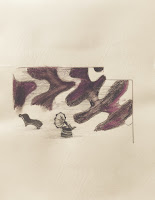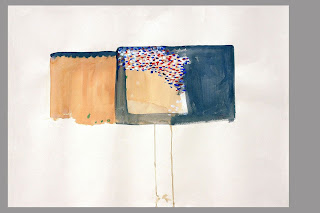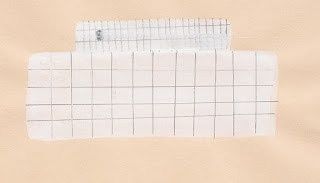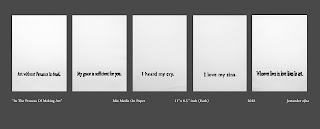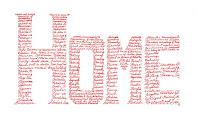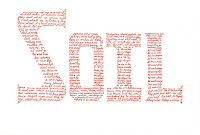'Bound’, forms an innovative sculptural lighting series which combines aesthetics and functionality in a unique manner. The brainchild of Purva Kundaje, an artist and architectural designer based in London, the works explore possibilities of material and object, and navigate notions of authorship, co-ownership and collaboration across geographies.
A graduate of the Royal College of Art, where she completed an MA in Design Products in 2021, Purva grounds her practice in narrative expression and sustainable material exploration. In the past, she has collaborated with craft-focused studios such as Rooshad Shroff and Sybarite, and has engaged extensively with women artisan collectives in India to integrate contemporary design languages with traditional craft methodologies. Her recent lighting project ‘Bound’ forges an unusual path – it begins as a sparse handstitched paper lamp, and then invites creative practitioners from varied fields such as poets, illustrators, textile artists, designers and others to participate as co-creators.
The collaborative aspect of the project originated from a previously held workshop led by Blake Carlson-Joshua and Purva, where they aided and supported participants process and express emotions through making objects.
 |
| Bound- Original Lamp form by Purva Kundaje |
“Each lamp begins as a handstitched, illuminated object made from an experimental paper blend of recycled newspaper and plasterboard waste. Developed through sustainable design research in partnership with Blake Carlson-Joshua, the material is both fragile and enduring—a luminous surface that invites response,” explains Purva.
The lighting series is in a sense an archive, which continues to evolve as various practitioners share and embed their stories, their cultural heritage, and memories onto the surface of the paper. Text, images and materials coalesce and assimilate on the shell of each lamp, bringing alive the plurality of the project, and the varied aesthetics and visual vocabulary of each piece.
 |
| Threshold by Purva Kundaje |
All other pieces have been created in collaboration with other creators. – ‘The Kite Flyers’ by Yuwei Cong captures the fluidity of
 |
| Soft Silence by Teng Xue |
 |
| The Adventures of an Ugly Cat by Boer Zhu |
In contemporary times, where AI and technology dominate, an initiative such as this which lays emphasis on sustainable design, the tactility of the surface, and employs the materiality of the paper through acts of writing, stitching or painting creates a corporeal and sensory engagement.
Purva’s interdisciplinary practice and her artistic sensibilities encompasses spatial installations, furniture design, and collaborative storytelling. Through this project, she thoughtfully investigates and engages with the emotional and cultural dimensions of form, utilizing reclaimed materials and light as mediums for evoking memory, authorship, and facilitating transformation.
‘Bound’ has been previously exhibited at Material Matters 2023, part of the London Design Festival, and Conceptual Erasure (Fulham, 2025), and is an ongoing project.
Please share this article and do subscribe to receive regular updates from Art Scene India.
For interviews, profiles, sponsored posts and to contribute articles, contact artsceneinfo@gmail.com
- Curating Corporate Art Collections
- Art News: Venkatappa Art Gallery: Renovation
- Art News: India Art Festival in Bangalore
- How To Write An Artist Statement
- 6 Tips On How To Approach An Art Gallery And Find Gallery Representation
- Exhibiting Art in Non-Gallery Spaces
- 5 Reasons a Good Catalogue Text is Essential for Your Art



